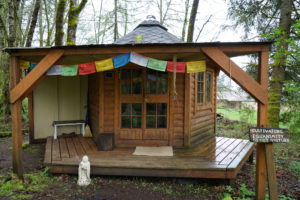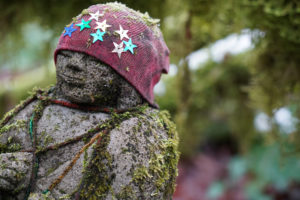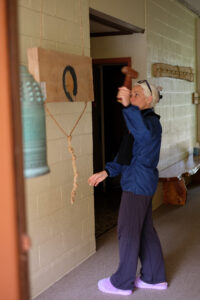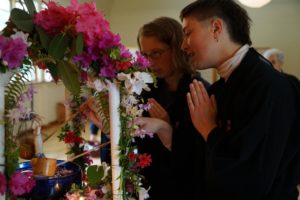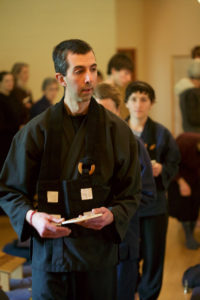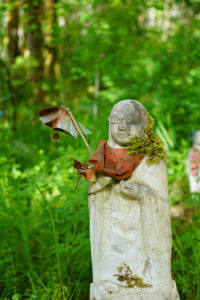Ordination as a Zen Priest
Great Vow is part of the Soto Zen lineage of Zen Buddhism. Priests who ordain in this tradition make vows to live selflessly, with stability and commitment to the Sangha as well as personal vows of Awakening and on-going refinement of insight and conduct. Priest ordination in this lineage is recognized by the Soto Zen Buddhist Association of America.
BECOMING A ZEN PRIEST
The ability to give the whole of one’s life to intensive practice of the Dharma and to serving the Sangha is a rare opportunity.
Great Vow Zen Monastery offers ordination and full time residential training as a Soto Zen Buddhist priest. The first step of this program begins with living at the monastery as a resident for one to two years, experiencing the full spectrum of attitudes, joys, and challenges that arise in community Zen training.
The subsequent steps of the ordination path are:
- Receiving the Five Precepts
- Taking Jukai, formally becoming a Zen Buddhist and receiving the Sixteen Bodhisattva Precepts.
- Postulancy, a minimum one year period of intensified training in which the ordained sangha and the postulant discern together whether ordination is appropriate. During this time the Postulant resolves outside commitments, obligations, and debts.
- Novice priest ordination, a five year commitment to continuous training at Great Vow.
- After the five year training period, it may be appropriate to continue ordination training, becoming a full Zen Priest.
Zazen
Stability and Service
We cultivate a joyful generosity and willingness to serve by supporting and staffing the many workshops and retreats of the Zen Community of Oregon.
All ordained serve for at least a year in the pivotal training roles of Jisha, teacher’s attendant; Shuso, head of the meditation hall; Benji, assistant to the Shuso; and Tenzo, head cook and kitchen manager.
Buddhist Study and Character Work
Central to the priest's training is dharma encounter with a teacher, 'sanzen'. Sanzen is a time when students receive personal guidance and an occasion for the student to bring their insight to life in non-conceptual, embodied expression. The inevitable challenge of showing up authentically in sanzen practice is a key part of the character work and body-and-mind study that mature the ordained priest over the years of training.


